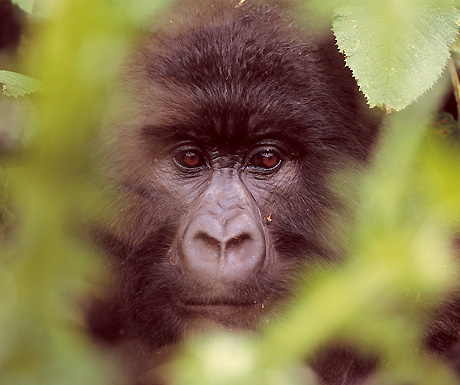When looking to plan a trip to see the gorillas in Uganda, the choice can sometimes seem a little overwhelming, so I just wanted to offers some straightforward advice on what it’s like.
Bwindi Impenetrable Forest in Uganda is one of two places in the world where you can currently trek mountain gorillas (the other being the Park National des Volcan in Rwanda, sometimes referred to as Virunga National Park or Volcanoes National Park.)

Bwindi has four habituated families, each very distinct with a different number of individuals and age ranges – with three of the families (Mubare, Habinyanja, and Rushegura) accessed from Buhoma in the north, and the fourth family, in Nkuringo in Southern Bwindi, which is accessed from Kisoro. Access to this last group however is very difficult, with trekking sometimes taking up to 9 hours so we mostly recommend the first three groups.
Bwindi forest itself is regarded as one of the most biologically diverse forests in Africa and, having survived the last Ice Age, it is over 25,000 years old, resulting in an incredibly rich mixture of flora and fauna, but it also looks fantastic. The huge moss-covered trees and prehistoric looking ferns which emerge from the mist as you trek only add to the atmosphere.
The gorilla treks themselves begin with an early morning wake up call in your lodge (usually around 05:30-06:00) with a steaming mug of tea or coffee and your packed lunch (provided by the lodge) before a short 5-10 minute walk to the entrance to the park headquarters. Here, you are given a briefing by the park ranger who will be leading you on the trek, where he talks about the history of the gorilla group you are going to see (decided on the day and dependent on the gorillas movements) and some of the dos and don’ts when in the forest. You then have the chance to hire porters for the day, definitely worth considering as an extra pair of hands to help with camera equipment, or someone to give you that extra push up some of the steeper parts of the trail is always money well spent! You then head into the forest in a group of up to 8 tourists – the maximum number allowed, plus your head ranger and his assistants.
The rangers are in constant radio contact with gorilla trackers who would have got up at first light to pick up the trail of the gorillas from the day before and whose sole job is to remain with the gorillas during daylight hours to maintain the habituation process and also help guide your ranger to where they are.
The walk to the gorillas is very much part of the experience, with the ranger pointing out plenty of interesting things along the way and with plenty of stops for water, the bush loo, or simply to admire the view and take photographs. The trek itself is always done at a pace that is comfortable for everyone and the ranger ensures that you walk at the pace of the slowest person; it is not a route march. The walking is usually done on existing forest trails and paths, but these are sometimes not well maintained and you may often have to go “off-piste” to find the gorillas, with your rangers clearing a path in the undergrowth for you as you go. For this reason I would recommend you make sure you undertake some form of exercise before your trip as good preparation.
When you near the gorillas, you will leave your bags with the porters and then take your camera and whatever else you will need for the one hour which you will spend observing the gorillas from a safe distance. You then spend your hour with the gorillas as the guide talks you through their behaviour following them around should they move. After the hour is up, you then return to the porters waiting nearby and make your way back to the starting point, from where you return to your lodge for a well deserved shower and the chance to celebrate your encounter with our closest living relatives.